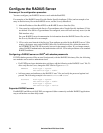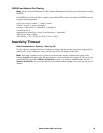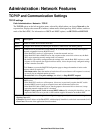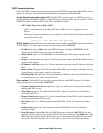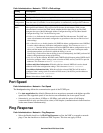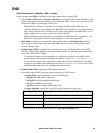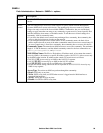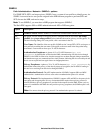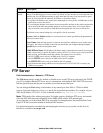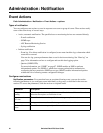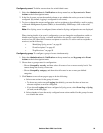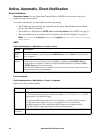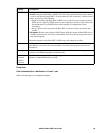Switched Rack PDU User Guide87
SNMP
All user names, passwords, and community names for SNMP are transferred over the network as plain
text. If your network requires the high security of encryption, disable SNMP access or set the access for
each community to Read. (A community with Read access can receive status information and use SNMP
traps.)
When using StruxureWare Data Center Expert to manage a Rack PDU on the public network of an
StruxureWare Data Center Expert, you must have SNMP enabled in the Rack PDU interface. Read
access will allow the StruxureWare Data Center Expert to receive traps from the Rack PDU, but Write
access is required while you use the interface of the Rack PDU to set the StruxureWare Data Center
Expert as a trap receiver.
For detailed information on enhancing and managing the security of your system, see the Security
Handbook, available at www.apc.com.
Network Port Sharing.
All Rack PDUs in a group can be accessed through the Host Rack PDU via SNMP "rPDU2" OIDs
available in our PowerNet-MIB.
The full path to these OIDs is:
iso(1).org(3).dod(6).internet(1).private(4).enterprises(1).apc(318).products(1).hardware(1).rPDU2(26)
Individual Rack PDUs can be identified in the SNMP MIB tables by viewing the corresponding
"Module" OIDs in each table. These Module OIDs will return the Display ID of the Rack PDU.
Example Module OIDs: rPDU2IdentModule, rPDU2DeviceConfigModule,
rPDU2SensorTempHumidityConfigModule
In order to be backwards compatible with previous versions, the Host Rack PDU will always be the first
index in any table that supports multiple Rack PDUs. In addition, after the Rack PDU group is set up,
the index order of guest Rack PDUs should not change even if the Display ID is changed or a PDU
temporarily loses communication. The index order should only change if you manually remove a Rack
PDU from the group.
An MIB table walk should skip the indexes associated with a Rack PDU that has temporarily lost
communication.



